Aquariums are more than just homes for fish—they are living art pieces that can transform a room into a serene and refreshing space. While colorful fish often grab attention, aquatic plants are the true unsung heroes of a healthy, beautiful aquarium. They not only add vibrant greenery and texture but also improve water quality, provide oxygen, and create a natural environment that supports fish and other aquatic creatures.
Whether you are a beginner aquarist or a seasoned aquarium enthusiast, incorporating live plants into your setup is one of the best decisions you can make. This article will explore five stunning aquatic plants that can beautify your home aquarium while also contributing to its ecosystem.
Why Add Aquatic Plants to Your Aquarium?

Before diving into specific plant options, it’s important to understand the many benefits they bring:
- Aesthetic appeal: Plants add depth, contrast, and a natural look, making aquariums visually stunning.
- Oxygenation: Live plants release oxygen during photosynthesis, improving water quality.
- Natural filtration: Plants absorb excess nutrients like nitrates, reducing algae growth.
- Shelter for fish: Fish use plants for hiding, breeding, and resting.
- Stress reduction: Both fish and humans benefit from the calming effects of lush greenery.
With that in mind, let’s explore five of the most attractive aquatic plants you can add to your aquarium today.
1. Anubias (Anubias barteri)
Why It’s Great:
Anubias is one of the most popular aquarium plants due to its hardy nature and striking appearance. Its broad, dark-green leaves provide a bold backdrop and complement colorful fish beautifully. Anubias grows slowly, which makes it low-maintenance and suitable for beginners.
Best Conditions:
- Light: Low to moderate
- Temperature: 72–82°F (22–28°C)
- Substrate: Doesn’t need to be buried; thrives when attached to driftwood or rocks
- Maintenance: Minimal pruning required
Design Tip:
Attach Anubias to decorative rocks or driftwood for a natural and artistic look. Its lush green leaves make it ideal for midground or background placement in aquariums.
2. Java Fern (Microsorum pteropus)
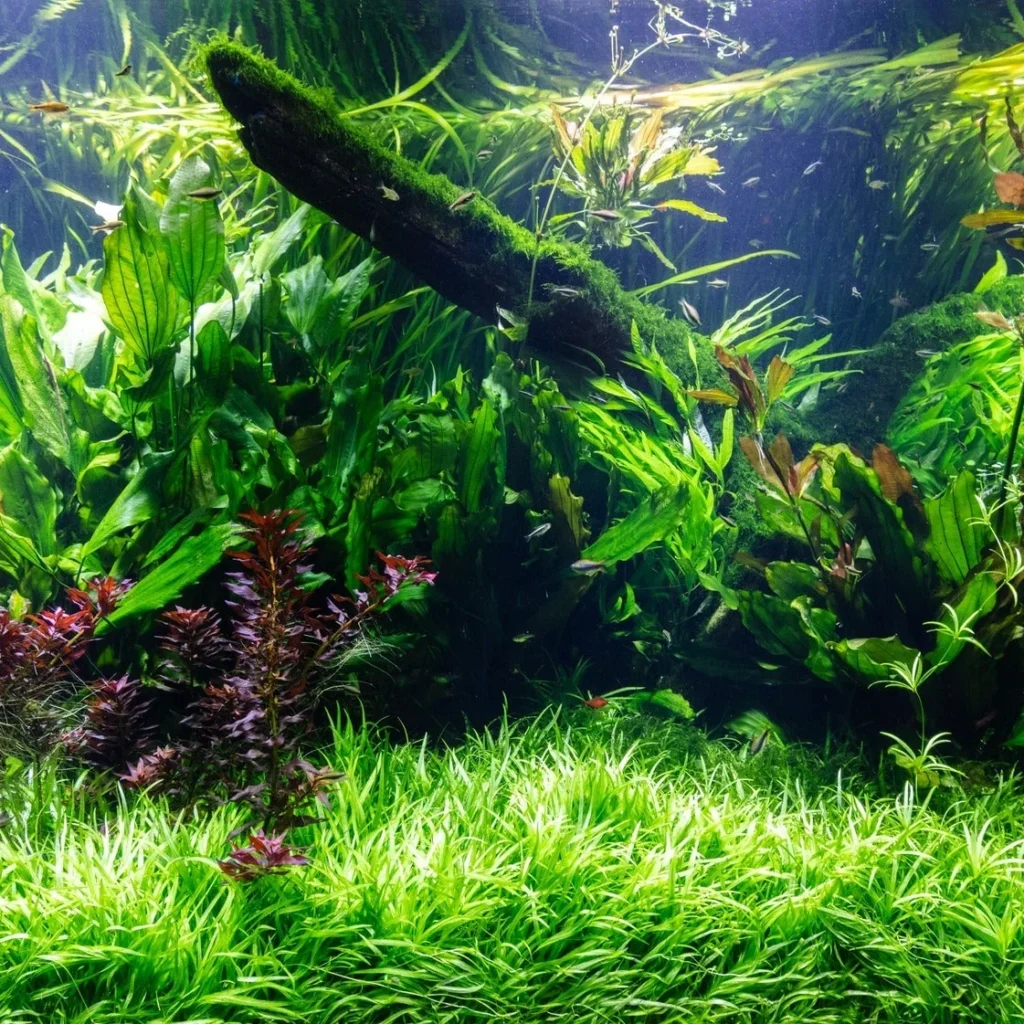
Why It’s Great:
Java Fern is another beginner-friendly plant that grows well even in low light. Its unique, long, and leathery leaves create a dramatic texture, making aquariums look dynamic. Unlike many plants, Java Fern doesn’t require planting in soil—it thrives when tied to stones or driftwood.
Best Conditions:
- Light: Low to moderate
- Temperature: 68–82°F (20–28°C)
- Substrate: No substrate needed; attach to hardscape
- Maintenance: Occasional trimming of older leaves
Design Tip:
Position Java Fern in clusters around hardscape features like rocks or wood. Their deep green tones contrast beautifully with brightly colored fish such as guppies or neon tetras.
3. Amazon Sword (Echinodorus amazonicus)
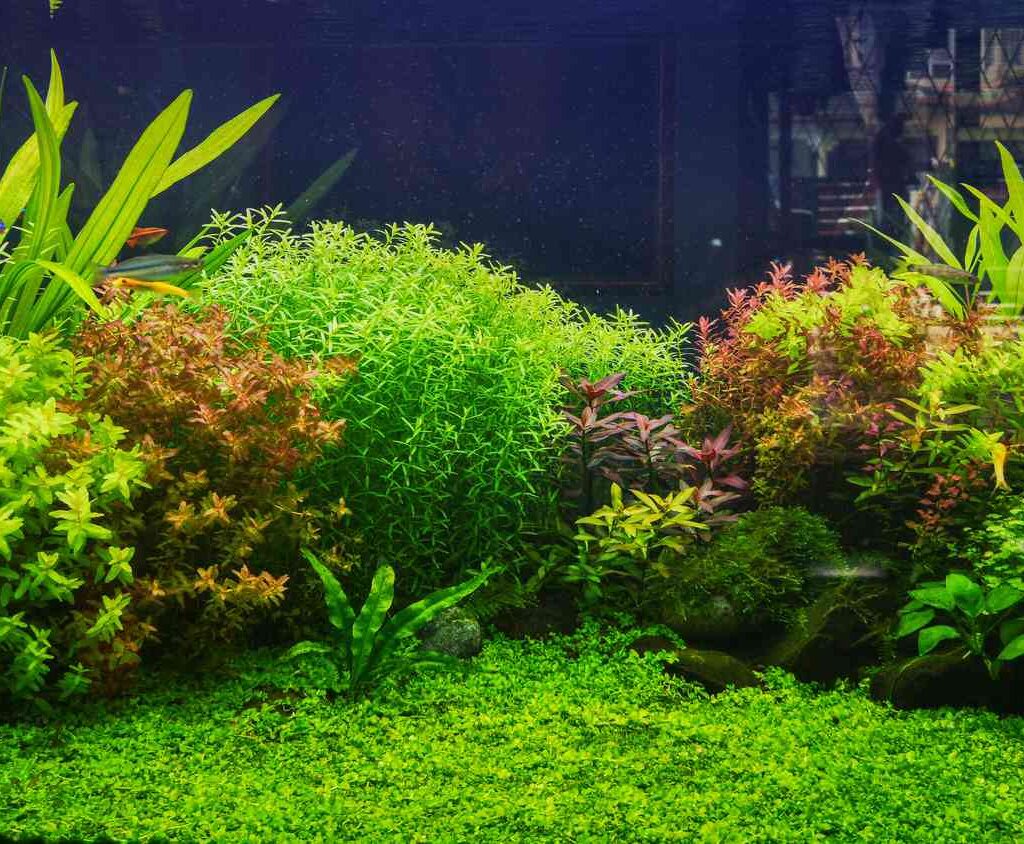
Why It’s Great:
Amazon Sword is famous for its large, sword-shaped leaves that can transform an aquarium into a lush underwater jungle. This plant grows quickly and adds impressive height, making it perfect for background planting. Its dense foliage also provides excellent hiding spots for shy fish.
Best Conditions:
- Light: Moderate to high
- Temperature: 72–82°F (22–28°C)
- Substrate: Nutrient-rich substrate required
- Maintenance: Occasional pruning of excess growth
Design Tip:
Use Amazon Swords as focal points in the background of larger aquariums. Pair them with smaller foreground plants like Dwarf Hairgrass for a layered effect that creates depth and perspective.
4. Hornwort (Ceratophyllum demersum)
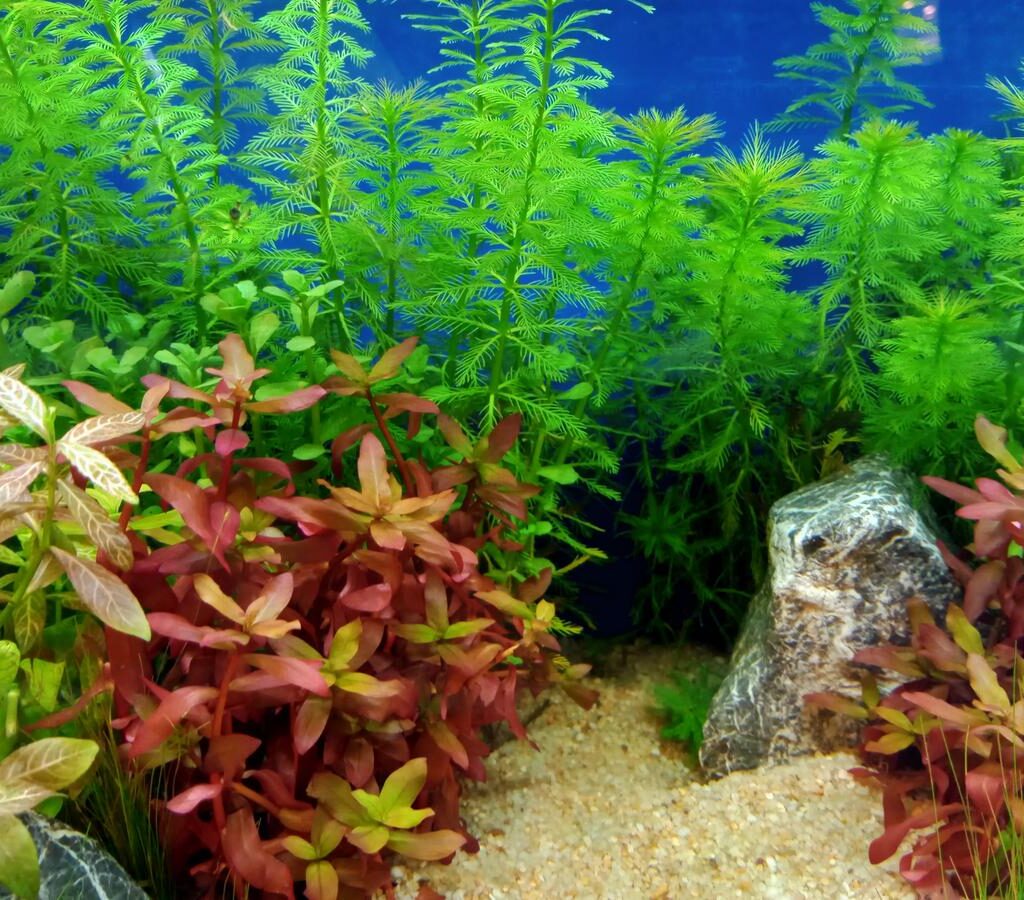
Why It’s Great:
Hornwort is a fast-growing, adaptable plant that floats freely or can be anchored in substrate. Its fine, feathery leaves add a soft, delicate texture to aquariums. It’s especially beneficial for fish fry (baby fish), as it provides shelter and protection. Hornwort also helps control algae by competing for nutrients.
Best Conditions:
- Light: Moderate
- Temperature: 59–86°F (15–30°C)
- Substrate: Not required; can float or be anchored
- Maintenance: Frequent trimming may be needed due to rapid growth
Design Tip:
Allow Hornwort to float at the surface for a natural, wild appearance. Its airy texture looks especially striking in aquariums with bettas, goldfish, or community fish.
5. Water Wisteria (Hygrophila difformis)
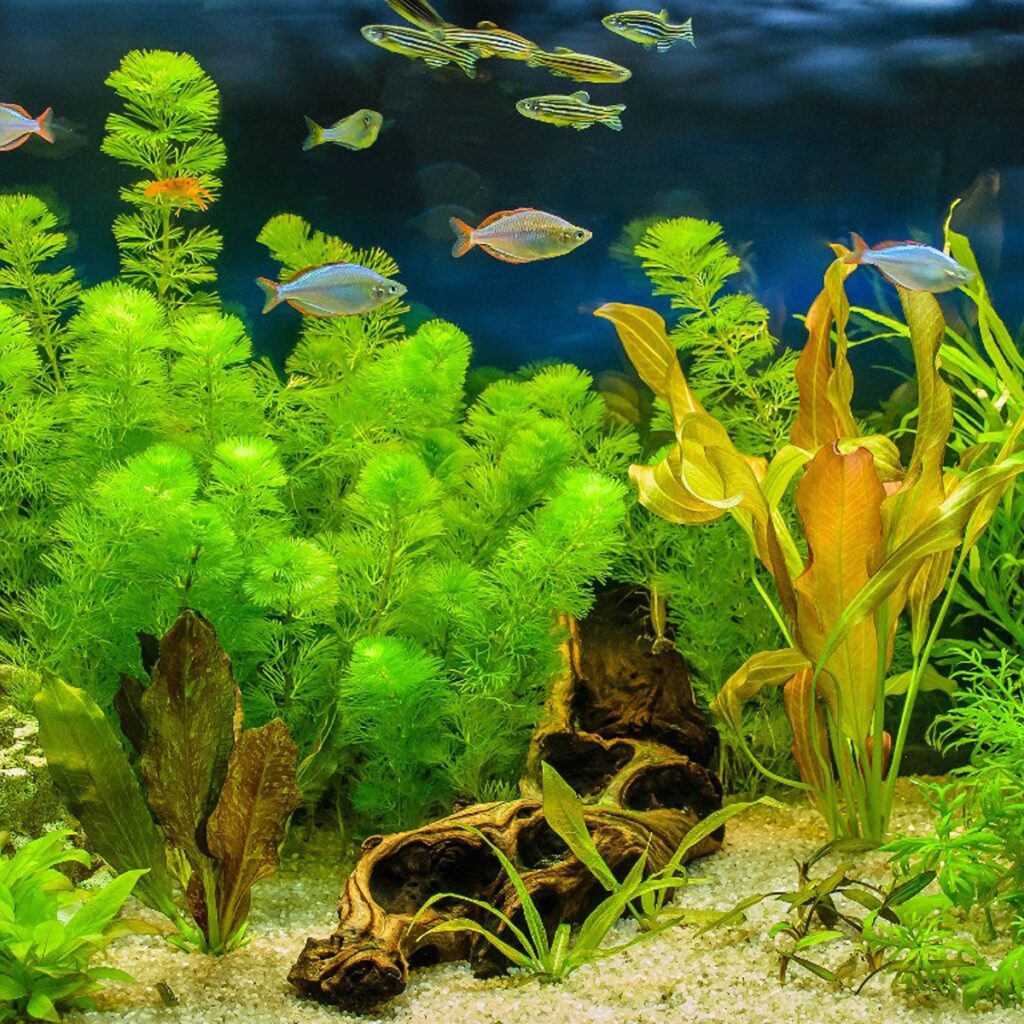
Why It’s Great:
Water Wisteria is a versatile plant known for its bright green, lace-like leaves that add vibrancy to any aquarium. It can be planted in the substrate or left floating, making it highly adaptable. Besides its visual appeal, Water Wisteria acts as a natural water purifier, absorbing toxins and helping to maintain balance in the tank.
Best Conditions:
- Light: Moderate to high
- Temperature: 70–82°F (21–28°C)
- Substrate: Nutrient-rich soil preferred
- Maintenance: Regular trimming to prevent overgrowth
Design Tip:
Plant Water Wisteria in the midground of your aquarium. Its finely divided leaves create a soft, lush look that contrasts well with larger-leaved plants like Anubias or Amazon Sword.
Tips for Maintaining Healthy Aquatic Plants
Adding aquatic plants is only the first step. To ensure they thrive and keep your aquarium beautiful, follow these care tips:
- Choose the right lighting – Different plants require different levels of light. Too little light will stunt growth, while too much may encourage algae.
- Use proper substrate – Some plants thrive without soil, but others need nutrient-rich substrates to grow well.
- Fertilize when needed – Liquid fertilizers or root tabs can help plants absorb essential nutrients like iron and potassium.
- Trim regularly – Prevent overgrowth by pruning dead or excess leaves. This encourages new, healthy growth.
- Maintain stable water conditions – Regular water changes and monitoring pH, temperature, and hardness are key to keeping plants and fish healthy.
Designing a Beautiful Planted Aquarium
Creating an attractive aquarium is like designing a miniature landscape. Here are some creative ideas:
- Foreground plants: Use shorter species like Dwarf Hairgrass or Cryptocoryne to create a lush carpet effect.
- Midground plants: Opt for medium-height plants such as Water Wisteria or Anubias to provide balance.
- Background plants: Use taller plants like Amazon Sword or Vallisneria to add height and depth.
- Floating plants: Add plants like Hornwort or Duckweed for a natural canopy that diffuses light.
- Hardscape integration: Combine driftwood, rocks, and plants for a realistic, nature-inspired look.
Conclusion
Aquatic plants are essential for creating a thriving, visually captivating aquarium. From the hardy Anubias to the elegant Amazon Sword, each plant brings its own charm and ecological benefits. Whether you prefer the airy softness of Hornwort or the textured vibrancy of Water Wisteria, these plants transform aquariums into living works of art while keeping the ecosystem balanced.
By carefully selecting and maintaining the right aquatic plants, you can design an aquarium that not only impresses guests but also provides a healthy, stress-free environment for your fish. So, the next time you plan your aquarium, don’t just think about the fish—let plants take center stage too.




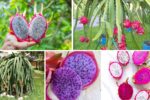
Leave A Comment